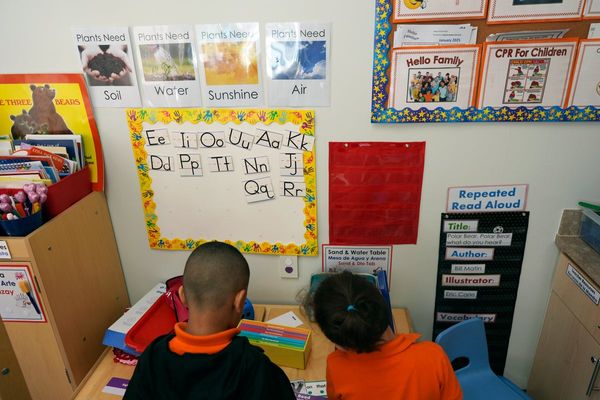
Stretching down the west coast of South America facing the South Pacific, Chile is a land of drama with 500 active volcanoes, thundering waterfalls and steaming thermal springs.
Here, we detail 10 reasons why the southern region of Chile should be on your 2020 bucket list.
1. The splendour of Santiago

To reach southern Chile, you’ll need to fly into Santiago and it’s worth a stop-off in the capital for a night or two. Founded in 1541 by the Spanish in a central valley, the city has survived a series of natural disasters. Santiago is split by the flood-prone River Maphocho – flowing from the Andes – and Chile is one of the most seismically active countries in the world.
The majestic neoclassical buildings in the historical downtown have taken a bit of a shaking. In 2010 the elegant Chilean National Museum of Fine Arts was badly damaged by an 8.8 earthquake but is now light, airy, calm - and free to visit. Situated opposite the urban Parque Forestal, a glass cupola crowns the main hall. The friendly Hotel Ismael is both central and stylish and minutes from restaurant Castillo Forestal, a lively brasserie converted from the impressively turreted nineteenth century park gardener’s house.
2. Chile’s largest lake and City of Music

We took an internal flight down to Puerto Montt and drove to Frutillar to walk along the black sand shore of Lake Llanquihue, dominated by the conical and glacier-topped Osorno volcano, looming across the water. New scientific research suggests that a crater found in Osorno province was the site of a meteor collision 12,800 years ago that caused global temperature changes, long after Osorno volcano’s 250,000-year-old caldera base was formed. The musical city of Frutillar, established by German settlers in 1856, hosts concerts all year round at the Teatro del Lago, built jutting into the lake with world-class acoustics. Many homes appear Tyrolean with Alpine-style larch wood shingles. Pet dogs wander around alone, crossing streets with care, and small craft shops sell copper jewellery and crochet scarves.
3. Chasing waterfalls

Go hiking in Puyehue National Park, spread across the Los Ríos and Los Lagos regions, for landscape extremes and pure air (Puyehue means ‘Place of Small Fish’.) This part of the Southern Andes mountain range has a vast tract of temperate rainforest with natural thermal springs, volcanoes and spectacular torrents. We walked in the Anticura district to Salto del Indio, Salto de la Princesa and Salto de Repucura, just a few of the waterfalls fed by the Gol-Gol river, pouring over black basalt rock. Pick up a map at Centro Turístico Anticura Parque Nacional Puyehue for the trails.
4. Volcanoes that grumble

The landscape is alive. Chile‘s high concentration of active volcanoes are fed by the collision of the tectonic Nazca and Antarctic Plates, causing 60 eruptions in the last 450 years. Osorno volcano – which has been compared to Japan’s Mount Fuji – hasn’t exploded since 1869 but in June 2011, a fissure in the Puyehue-Cordón Caulle volcanic complex spewed ash which reached as far as Australia and New Zealand. During 2015, nearby Calbuco stratovolcano in the Los Lagos region awoke, sending a huge ash column into the atmosphere and Villarrica, called Rucapillán (Devil’s House) by Chile’s indigenous Mapuche people, also discharged a pillar of lava after weeks of rumbling.
5. Camping and kayaking

Every National Park and National Reserve in Chile is under the administration of CONAF (Corporación Nacional Forestal) and it’s essential for safety to apply for approval to camp in the wild. Our ‘Basecamp Experience’ night at 1,255 metres on the frozen slopes of the Casablanca volcano was organised by The North Face Chile. An unexpected gale blew up in the night and the wind chill made the temperature plummet to minus 20 but our tents and sleeping bags were snug. If you prefer a site with facilities, Los Copihues Cabanas & Camping has a lovely onsite restaurant serving homegrown produce including crushed raspberry juice and pebre, a spicy Chilean pepper salsa. From the Las Juntas ecolodge, you can go kayaking across Lake Puyehue to Fresia Island. Pumice stones, formed from cooled lava frothy with gas, decorate the smooth shore.
6. Swimming in hot thermal springs

Close to the entrance of Puyehue National Park, the Termas Aguas Calientes’ thermal outdoor pool, by the side of the Chanleufu river, looked very inviting as we hiked past. Hot springs bubble up all along this location and you’ll spot children bathing in steamy forest puddles, with waters up to 30°C. For a little luxury, guests at Termas Puyehue Wellness & Spa Resort can enjoy the hotel’s indoor and outdoor hot spring pools and visitors can also buy a day pass for a relaxing visit, as did we. With varying temperatures from hot and invigorating to gently warm, laying back in mineral-rich thermal waters is definitely a pleasure.
7. Tulip fields, bellflowers and berries

Chile is known for exporting copper and wine but it was a surprise to also see flower bulb production. The colourful stripes of tulip flower fields stretching across the land near Osorno are a beautiful sight at sunset. The Chilean bellflower (Lapageria rosea) has large deep pink or red petals and is the national bloom. An evergreen climber found in woodland and pollinated by hummingbirds, it’s now an endangered species, illegal to pick. Latua pubiflora, ‘Tree of the Sorcerers’, is one of several toxic and hallucinogenic flowering shrubs traditionally used by Mapuche shamans but the Chilean guava (Ugni molinae) is a sweet wild berry safe to serve in desserts.
8. Rainforest hikes and the snowshoe shuffle

Following the El Pionero route, we hiked through the Puyehue National Park rainforest where petite umbrella ferns sprout just above carpets of moss, the ideal hiding places for tiny frogs. The distinctive Chilean myrtle tree (Luma apiculate) has delicate cinnamon orange bark which peels as it grows, leaving a ghostly silhouette. Nothofagus trees (known as southern beeches) have been around since the Cretaceous period, so at least 66 million years. We climbed inside the massive hollow trunk of one gnarled old specimen.
At higher altitudes, you can hire skis, snowshoes and hiking poles from Antillanca ski resort to shuffle up to the see the crater of the Casablanca holocene stratovolcano. It takes around four hours there and back, with time to admire the stupendous view.
9. Bird watching and horse riding

Carry binoculars if you’re a bit of a secret twitcher. You might be lucky enough to spot an Andean condor, Chile’s national bird, riding a current of warm air. And a rustle in the undergrowth might well be a caracara. Broad-winged with an orange face, this bird of prey has long legs and perversely likes to run around on the ground. Making the most noise are the Magellanic woodpeckers, feeding on wood-boring grubs, and outside the Sonesta Hotel Osorno, colonies of buff-necked ibis chatter in the native garden by the River Rahue.
Wrap yourself in a poncho to go horse riding with Cabalgatas Santa Elvira Puyehue to the mighty Salto del Calzoncillo waterfall near Lake Rupanco. You can trot slowly if you’re a novice or go galloping over the open fields. Authentic headwear in the saddle is the wide-brimmed chupalla straw boater but your travel insurance might well stipulate you have to wear a hard hat.
10. Pisco sours with wild shredded boar

Chile and Peru bicker over which country makes the best pisco, the South American spirit distilled from grapes, but Chilean pisco sours certainly hit the spot. Pisco is mixed with sugar syrup, limes, egg whites and Angostura bitters for the perfect cocktail to start or finish any meal. We drank pisco sours in Frutillar at Colonos del Lago before crab terrine and rack of lamb and at El Taique Lodge, tucked between Lake Puyehue and Lake Rupanco, after pumpkin soup and venison. At the foot of the Puyehue volcano with a cosy log fire, the El Caulle restaurant has its own speciality, the ‘ulmo sour’, made with honey. Sopaipillas (puffs of fried dough bread) were an irresistible starter with a smoked chilli dip before succulent wild boar with braised red cabbage.







